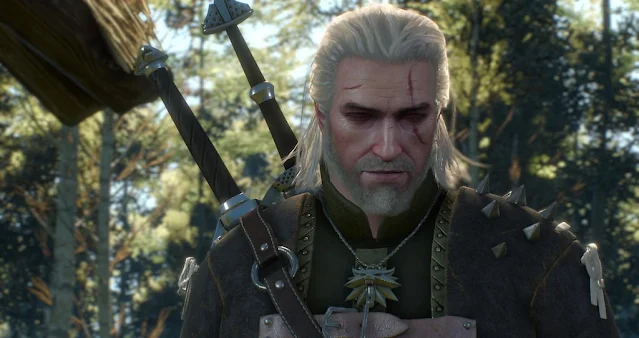Geralt and the Destiny Child
But Geralt initially has a completely different goal and follows the call of the sorceress Yennefer, who has invited him to a tavern in White Orchard. He is not only driven by the strange schizophrenic love for the black-haired magician, but also by the visions that have been plaguing him for some time. In it he sees Ciri, the granddaughter of Queen Calanthe and Geralt's "surprise child", who is kidnapped at the witcher fortress of Kaer Morhen by the ghost army of the Wild Hunt. No matter how cool the monster hunter may appear on the outside, his paternal feelings for Ciri drive him forward.
But this makes him a cog in a much larger event. Because Ciri is of Elder blood and even if she can't control her power yet, she could decide entire wars. Gradually, Geralt learns which paths Ciri has taken, but the closer he thinks he is to get to her, the greater the distance to her seems to become, always knowing that the demons of the Wild Hunt, armed like faceless knights, will always be ahead of him could catch up...
Free as a bird
Unlike The Witcher in 2007 (GG user rating: 8.5) and The Witcher 2 in 2011 (GG test: 8.5), Part 3 is based on an open-world concept. The game world covers a large part of the northern kingdoms, including Velen, which is characterized by swamps and large valleys. The kingdom of the Skellige Isles is the most Norse of all the included territories and shares many parallels with the culture we refer to as the Vikings.
Although you can travel really huge areas, the world is not in one piece. Instead, it is divided into a total of five regions that have to be loaded separately and vary greatly in size. The most extensive area is clearly that with Velen and the city of Novigrad, which alone already exceeds the dimensions of the game world of The Elder Scrolls 5 - Skyrim (GG test: 9.5). Skellige is also huge, and you will not only be on the central island, but also on several side islands, some of which are quite large. At least felt, this part of the world can also compete with the dimensions of Skyrim. But not every region in the game is that gigantic. The capital of Temer, Vizima, which was the focus of the first Witcher adventure, includes just the castle where you meet Emperor Emhyr van Emreis. Before the game world opens up to you practically completely (you can only return to the witcher fortress of Kaer Morhen and its surroundings, which you briefly enter in the tutorial, at a later point in the story), you only have to complete the first story quests in the White Orchard region.
Whether you travel to Skellige or to Novigrad afterwards is up to you. However, CD Projekt does a lot to ensure that you follow a certain order when traveling through the areas. You can generally ignore the "recommended character level" if you want. But 1000 kronor for the crossing to Skellige you have to find first! Basically you are very free in your movement in the areas. You can ride to any place you want to go on foot or with your roach horse, which can be whistle at any time (which also teleports straight to islands that you have ferried yourself to by boat). However, the outer limits of the game world are not set very artfully: If you go too far, the game warns you that "only the dragons" are waiting out there and you should turn back. But instead of sending at least one invincible dragon after us, at some point the character menu simply opens and we are pushed back to the limit after closing it.
Exciting change of perspective
Witcher 3 thrives on Geralt's desperate search for Ciri and the associated changes in perspective. Whenever Geralt finds someone who has met Ciri, he will learn about what happened via dialogue or cutscene. And that's not all, in these flashbacks you slip into Ciri's role yourself, conduct dialogues with other characters or fight. In the course of the main story you will experience twists and turns as well as some surprisingly emotional moments. Although you are constantly busy with quests in the game world that have nothing to do with the search for Ciri, CD Projekt manages the trick of never letting you completely lose sight of your main task. Many of the side quests and characters are in fact cleverly interwoven with the core story. So you only meet the sorceress Keira Metz briefly at first. However, her role in this one scene is already of such importance for the core story that her subplot also becomes part of the main quest.
This applies to Dijktra's history with the former king's counselor Philippa Eilhart as well as to Ciris and Geralt's past together. At certain points, you can be told in dialogue form how the first meeting came about, how Ciri got to Kaer Morhen, or what adventures the two of them have already had together. But if you don't want to, you don't have to do it. As in the predecessor, CD Projekt marks which parts of the multiple-choice dialogues have to be conducted and which serve to deepen those who are interested. Anyone who was already impressed by the content and quality of the additional dialogues in Dragon Age - Inquisition (GG test: 9.5) will be impressed by those in The Witcher 3. Many books and other documents also reveal background details about the characters and the game world. But don't expect a gigantic book collection à la The Elder Scrolls: Skyrim.




